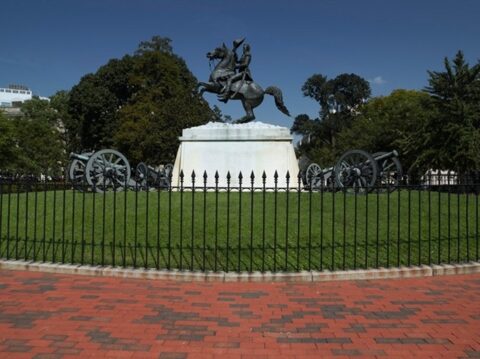Rubenstein Center Scholarship
Andrew Jackson Statue, Lafayette Square

A slave helps craft this statue and the Capitol's statue of freedom...
A statue of Andrew Jackson at the Battle of New Orleans occupies the center of Lafayette Square. Erected in 1853, it was the first bronze statue cast in the country and the first equestrian statue in the world to be balanced solely on the horse's hind legs. The sculptor, Clark Mills, had never seen an equestrian statue before, let alone one where the horse balances on two legs. When Mills came to Washington from South Carolina to work on the statue, he brought with him an enslaved apprentice named Phillip Reid. While we don't know exactly what Phillip Reid did for the Jackson statue, his contributions to another Mills project—the statue called Freedom that now sits a top the United States Capitol dome—give some indication of how important he was to Mills's work. Reid was responsible for casting the statue of Freedom and for loading the 5 sections of the statue onto wagons that transported them from Mills's foundry in Bladensburg, Maryland to the Capitol. Phillip Reid was praised on the floor of the US House of Representatives in 1928 for his work on the Statue of Freedom, which succeeded largely due to "the faithful service and genius of an intelligent negro in Washington named Philip Reid, a mulatto slave owned by Mr. Clark Mill [sic] . . .much credit is due him for his faithful and intelligent services rendered in modeling and casting America's superb Statue of Freedom. . ." (Congressional Record (1928), 1200)
































































